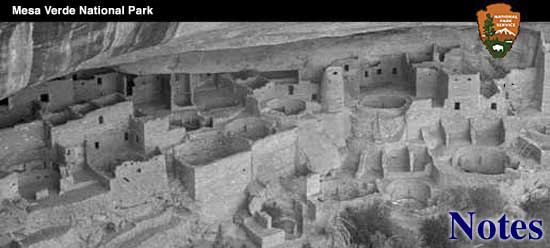

|
A chance to live in the great outdoors, to feel the body develop and the muscles grow taut under the impulse of hard work, and to earn money with their own hands; that is what the C. C. C. is offering the Colorado boys is the camp in Mesa Verde National Park. Each one knows that he is doing a most useful work and that five-sixths of his salary is sent to his family. But the dollar earned is not the only remuneration for the work is worth many times that in the strengthening of the morale. Interesting work, good companionship, wholesome food, clean recreation, and the knowledge that they are earning money has changed the whole attitude of the boys. Once again they feel they are doing something worthwhile. Very few of these young men have had an opportunity to learn a trade. As far as possible they are given an opportunity to do work they prefer in an effort to help them become better qualified for that work. Under the guidance of mechanics, electricians, carpenters, and stone masons they are learning something of these trades. The resident engineer, of the park is developing a surveying crew from those interested in that work. The methods of moving and planting shrubs and trees are being taught those interested in landscaping. Some have requested jobs as truck drivers and these men have been selected for their ability and carefulness. No one has expressed a desire to learn any of the intriacacies of pick and shovel operation but every day many are using these tools, which are the key to all construction work. When the boys entered camp they listed the type of work they would prefer. One listed, "No work—baseball". He plays plenty of baseball but not untill his days work is completed. Is the park receiving any direct benefit from the labour furnished by the boys? Let us consider briefly the nature of the work being done in order to answer this question. All of the work may be grouped under three headings, namely; landscaping, erosion control and insect control. The headquarters area is the scene of most of the landscaping activities as well as some of the erosion control. A parking area with necessary retaining walls and drainage is being constructed. Trails and roads are being constructed in an effort to unify the area, and considerable planting is being done around the public buildings. Old road scars are being planted out in an effort to beautify this section of the park. Erosion control includes the flattening and rounding of barren slopes along the entrance highway and the elimination of old road scars by restoring them to the natural grade. High-cut banks are graded to give a more pleasing appearance and to afford more protection from the washing caused by rains. After the slopes and old roads have been graded they are planted with seeds and plants native to the region in an effort to stabilize the soil. This group of workers is known as the "chain gang". The third type of work is known as insect control. Areas of insect infested trees and bushes are being treated to control the infestation. The worst offenders are the pinon pine bark beetles and the tent caterpillars. The infested trees are cut down and burned to prevent the spread of the beetles. A similar treatment is given the tent caterpillars—the tents being cut from the bushes and burned. Another offender, although not an insect, which is doing considerable damage to the pinon trees is the porcupine. These destroyers are being killed by a detail of boys who hunt them at night. The insect control boys are the "bug crew". The construction work for the C. C. C. boys is proposed by the Superintendent of the park and the Branch of Plans and Designs of the National Park Service. This work is under the direct supervision of an engineer and a landscape architect, these men being assisted by the various crew foremen. A civilian camp superintendent directs the placing of the boys and all the tools and equipment. All discipline, medical care, sanitation, housing, feeding, and recreation is under the supervision of a detachment of United States Army Officers. Do the boys like the camp and the opportunity to work? The best answer is found in the fact that approximately two-thirds of them have re-enlisted for the winter camp, the rest having either returned to school or obtained work elsewhere.
| ||||||
| <<< Previous | > Cover < | Next >>> |
vol4-2b.htm
14-Oct-2011